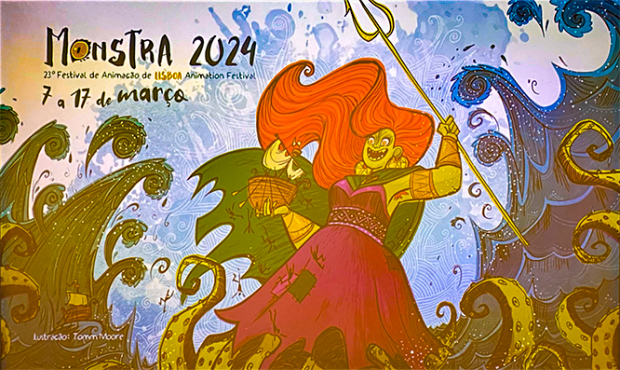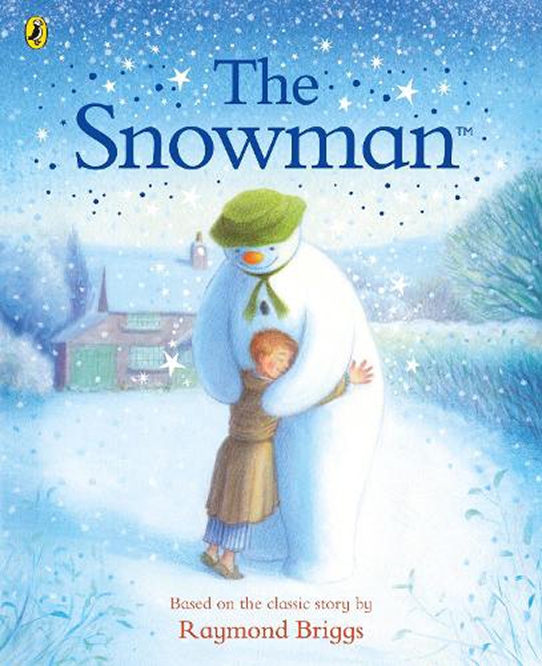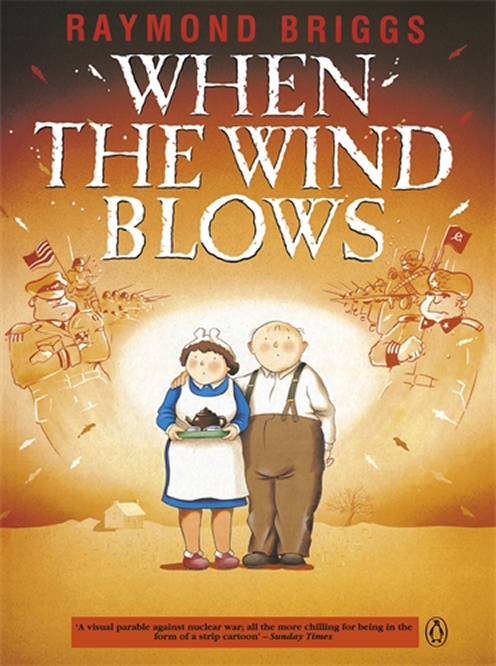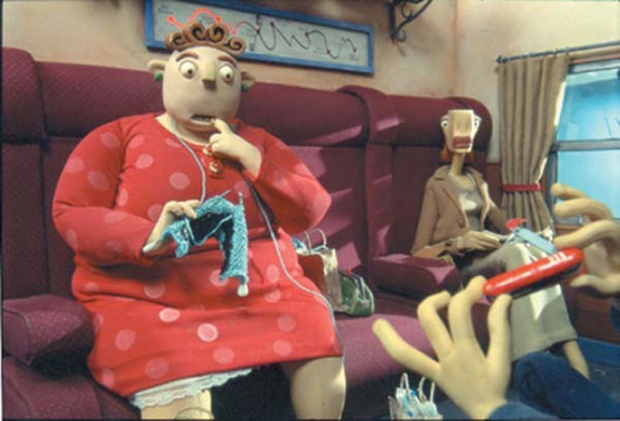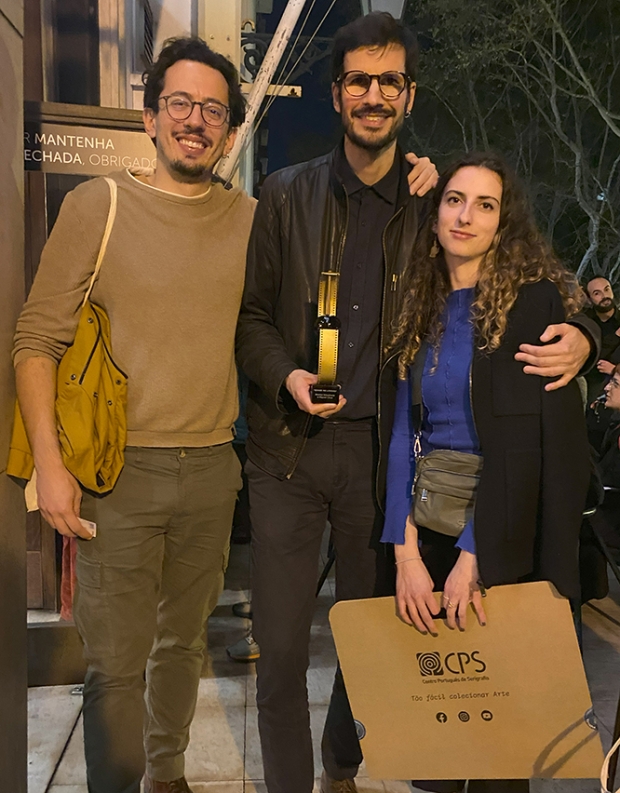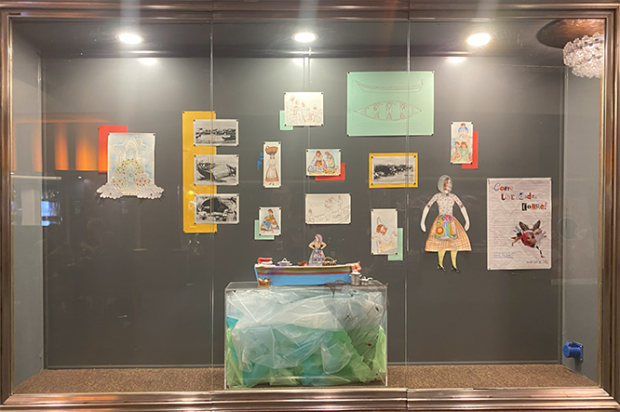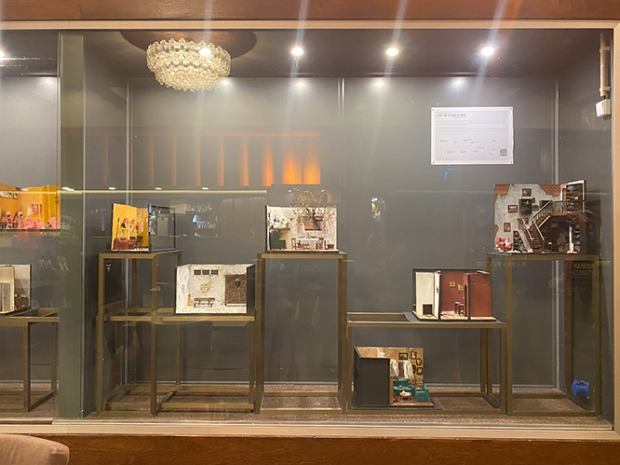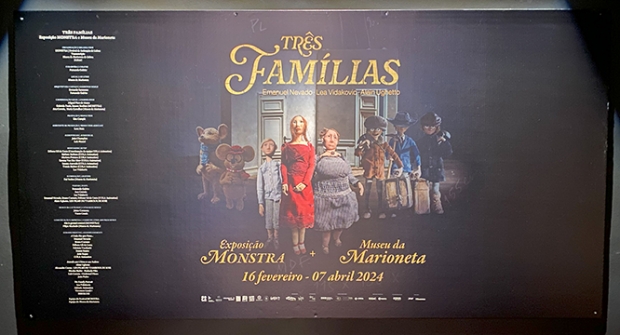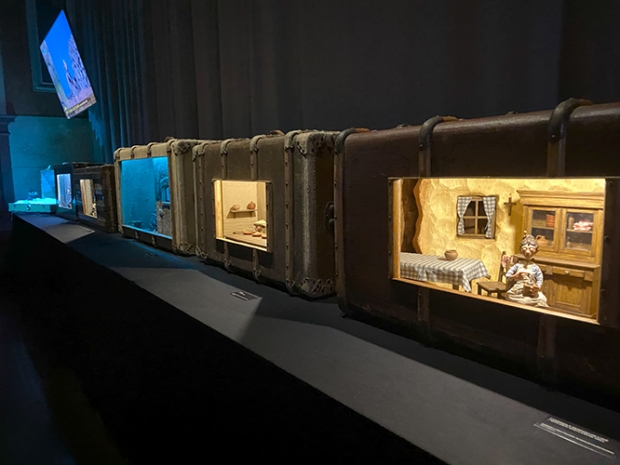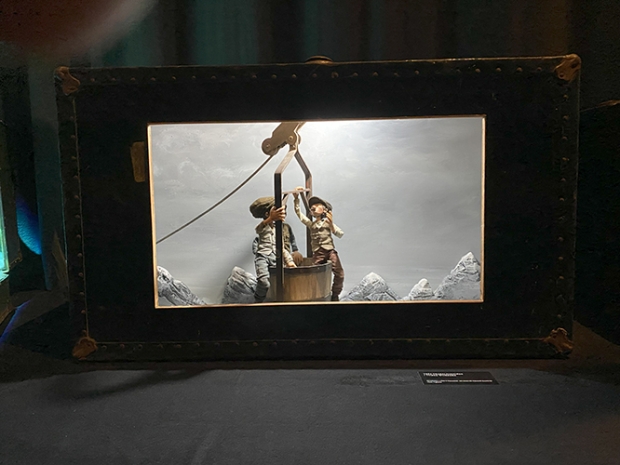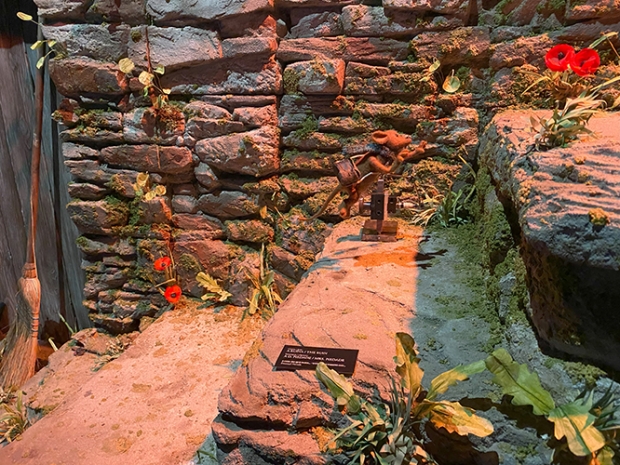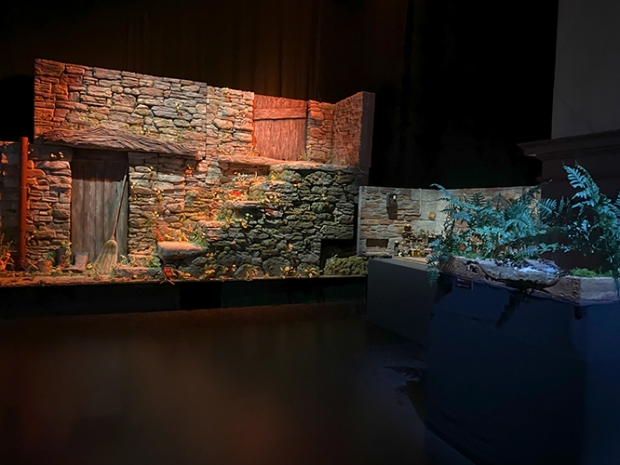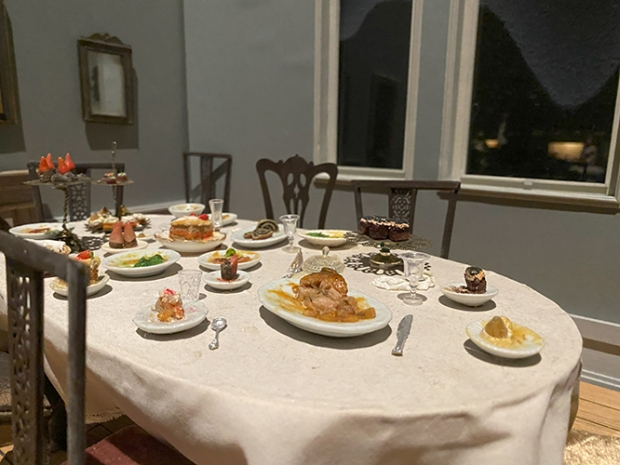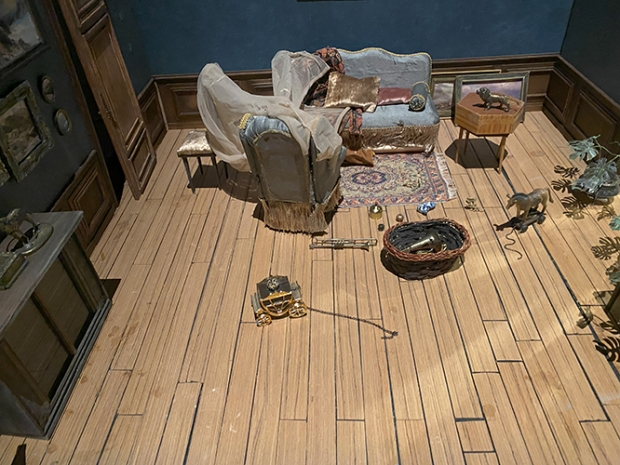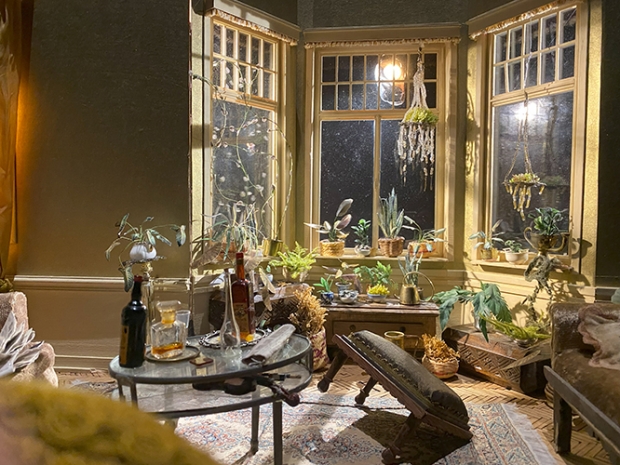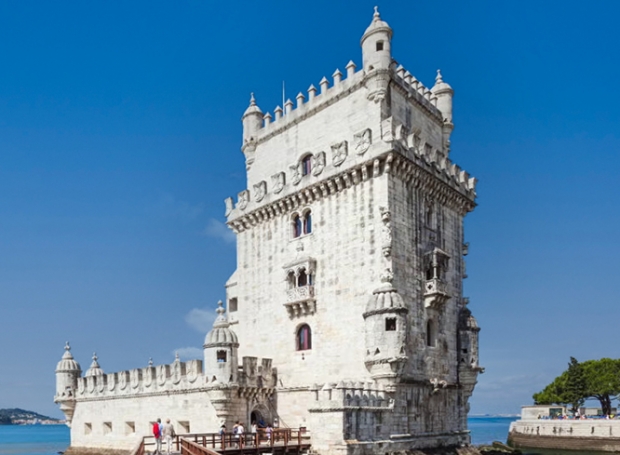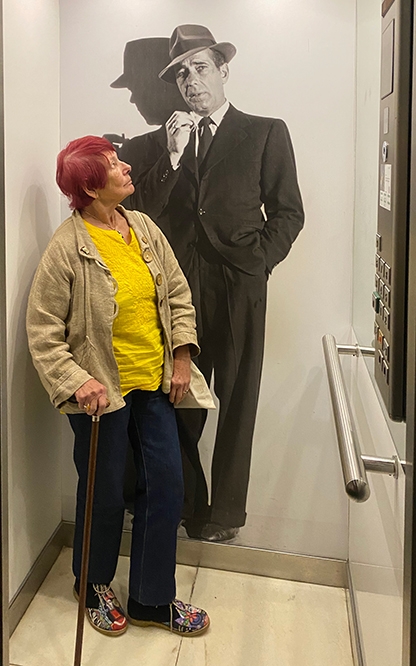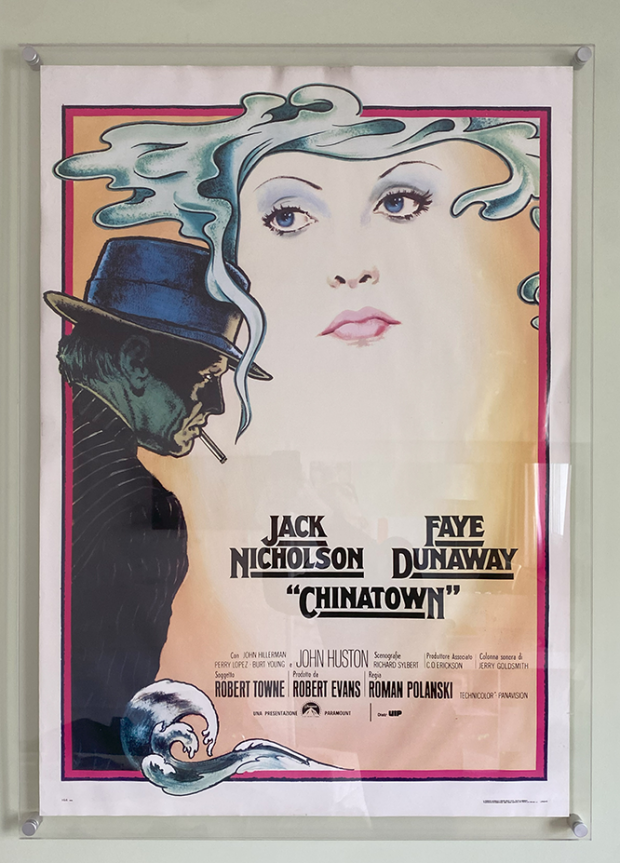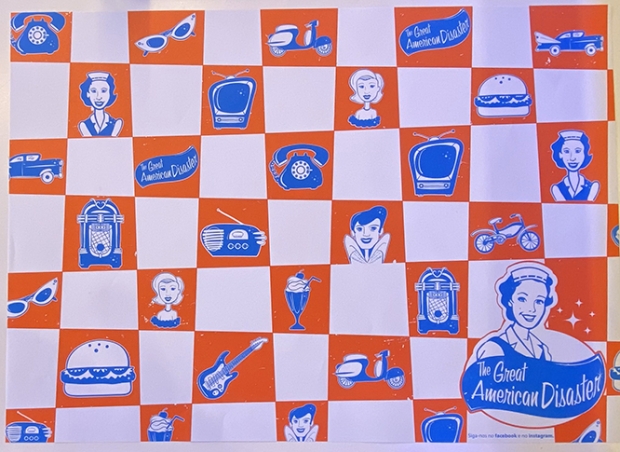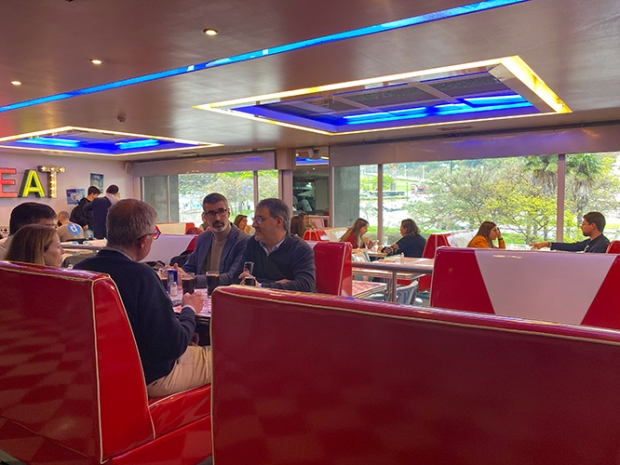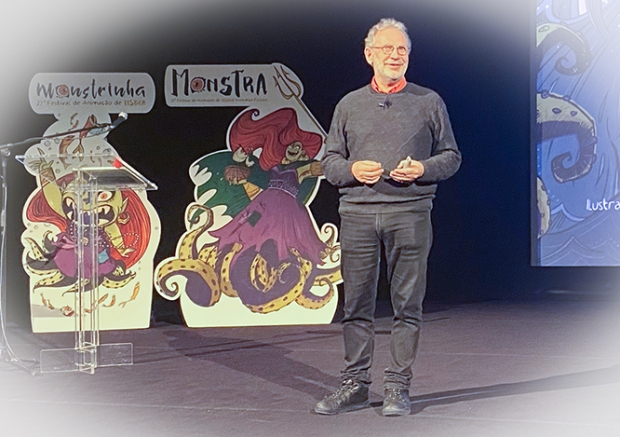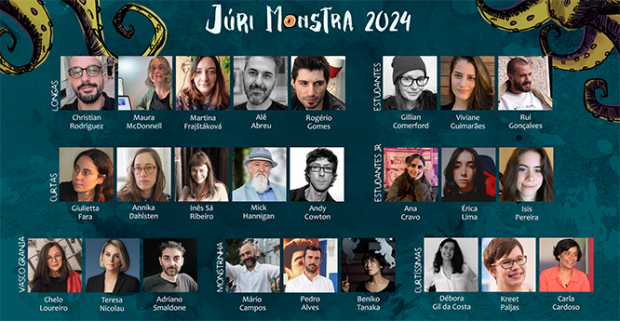The 23rd Monstra Festival of Animation in Lisbon, reached out its tentacles to show films at six different cinemas throughout the city for eleven days
Monstra Grows Tentacles
This year, the 23rd Monstra Festival of Animation in Lisbon, reached out its tentacles to show films at six different cinemas throughout the city for eleven days. Along with a full program every day at the historic Cinema Sao Jorge, there was one also at Cinema City Alvalde. This cinema advertises itself as not a conventional theatre. It says that it wants to appeal to all of your senses and emotions. I didn’t get to that cinema this year but they have me curious and on my next visit to Monstra I plan to explore that cinema.
More conventional settings were the Cinema Fernando Lopes situated inside the Universidade Lusofona, The Muse National De Etnologia, and AMAS (Auditorio Municipal Antonio Silva).
Whenever I am in Lisbon, I visit the Cinemateca Portuguesa. This year I was happy to see that the festival screened films and presented a masterclass there. Founded in 1948, the Cinemateca has grown to include two lovely screening rooms that show vintage Portuguese and International films. It also contains a library and photographic archive, as well as an equipment museum featuring projection objects from the 17th century down to the present. In 2010 work was completed on the construction of five new vaults to safely archive old film. The Linha de Sombra bookstore offers a wide selection of books, magazines, DVDs, and postcards.
All of this would be enough to delight any cinephile, but there is also a lovely restaurant where you can enjoy delicious meals, good beer, and wine at a reasonable price. The restaurant also has outdoor rooftop dining. Even if you are not a film buff, which I can’t imagine, it is a lovely place to dine.
2024 marks the 50th anniversary of the Carnation Revolution, so it was fitting that the theme for this year’s festival was “Freedom of Expression”. For those of you not up on your Portuguese history, the Carnation Revolution was a military coup by left-leaning military officers that overthrew the authoritarian Estado Novo government on 25 April 1974 in Lisbon. It resulted in major social, economic, and political changes in Portugal and its overseas colonies. It was a peaceful revolution resulting in the Portuguese transition to democracy and the end of the Portuguese Colonial War in Angola. The Carnation Revolution got its name from the fact that almost no shots were fired and the people offered carnations to the soldiers when they took to the streets to celebrate the end of the dictatorship.
As part of the opening tribute to the historic event, four films were screened on the theme of revolution. My favorite one was The Revolution. The five-minute film is a collective work by animation school students from Portugal, Italy, Germany, Bulgaria, and Turkey. In the film the students, who are too young to remember revolutions in their countries, discuss what revolution means to them.
This year the festival guest country was Ireland. Tomm Moore of Cartoon Saloon created a beautiful poster and trailer that embodied the spirit of Ireland and animation. There were plenty of fish, octopus tentacles, and fishermen all lorded over by a large woman with wild red hair and tentacles for feet. She looked like a wilder grown-up version of the young girl from Wolfwalkers. Even the festival awards featured octopus tentacles.
Ireland is currently a powerhouse on the animation scene, but it wasn’t always that way. Pioneers like James Horgan in the early 20th century and Aidan Hickey in the 1970s created children’s series and festival films such as Hickey’s 1987 An Inside Jab about a trip to the dentist, but that can hardly be considered an animation boom.
In 1979 American Don Bluth set up his studio in Ireland. At the time it was the largest animation studio in Western Europe. Monstra screened two of Bluth and his team’s successful feature films, The Land Before Time and All Dogs Go To Heaven.
It wasn’t until Jimmy Murakami and Fred Wolf founded Murakami-Wolf Studio in Dublin that Irish animation began to be noticed. Jimmy was born on the West Coast of California and as a boy, he was interred with the rest of his family in a Japanese internment camp. As a producer, director, and animator he produced two films that are still very loved today. The 1982 film, The Snowman, based on Raymond Briggs's beautiful children’s book, has become a classic film.
The powerful 1986 anti-war film When the Wind Blows, also based on a Raymond Briggs graphic novel, is still devastating to watch. In the film, an ordinary couple prepares to face a nuclear attack using a British government-issued pamphlet with all of the wrong information to safeguard their home. The festival screened both of these famous films and Jimmy’s personal short films were also shown in a special tribute program to him.
Cartoon Saloon was founded in Kilkenny in 1999 by Nora Twomey (Breadwinner) and Tomm Moore. Its first four films, The Secret of Kells, Song of the Sea, Breadwinner, and Wolfwalkers, have all been nominated for the Best Animated Feature Film Oscar.
Along with screenings of Cartoon Saloon’s four feature films, a retrospective of their short films was shown. Tomm Moore was also a guest at the festival and gave a masterclass “From Sketch Book to Screen”.
In 2024 Cartoon Saloon is celebrating its 25th Anniversary and I send my congratulations to all of the studio. I am sure that there will be numerous celebrations throughout the year.
I had been looking forward to seeing Spanish animator Isabel Herguera’s new feature film Sultana’s Dream, but I couldn’t have begun to imagine what an impact the lavish visuals and the rich, full depth of the story would have on me.
The film is loosely based on and inspired by the 1905 Bengali Utopian story Sultana’s Dream. The book was written by Begum Rokeya, also known as Rokeya Sahkawat Hossain, a Muslim feminist, writer, and social reformer from Bengal.
The film opens in present-day times where we are introduced to Ines, a young Spanish artist. She is recalling her first experience of fear. “I remember it like it was yesterday. I was eleven years old. My father had not yet arrived to pick me up and the shadows of the night fell over the park. Some distance away, a man was watching me closely. I felt his cold, calculating gaze and my heart stopped. (. . .) It was the first time I experienced fear as a woman.”
Ines travels to India to end a relationship with her Indian lover. While there, in a bookstore, by chance, she discovers Rokeya Hossain’s story about a Utopian country, Ladyland, ruled by women, a world governed by intelligence and not force. “It is men who pose a danger to women, not the other way around, so why should we lock women away”, asks Hossain.
As rich as the story is, the artwork is just as fascinating as the story. Ines’ journey is in 2D watercolor taken from Herguera’s travel notebooks. Cut-out animation is used to recreate Begum Rokeya Hossian’s life, and for Ladyland, Mehndi (temporary henna tattoo) was employed once a way to animate with it was discovered.
I hope that Sultana’s Dream gets wide distribution; it is a film that deserves to be seen by the entire family followed by a discussion about women’s place in the world, and particularly our safety.
In the last twenty years Portuguese animation has burst upon the world animation stage. For many years Portuguese animators told stories about their native poets, writers, and everyday family life which did not necessarily transfer to the rest of the world.
This all began to change in the early 2000s when animated films such as José Miguel Ribario’s The Suspect captured the hearts of audiences throughout the world. The 24-minute puppet animation is suspenseful but has its humorous moments as a “train killer” is on the loose and a young traveler begins to suspect that the murderer is one of the three occupants of his cabinet. But are his suspicions correct?
In 2022 Jose Miguel made his feature film directing debut with Nayola. The story of three generations of women caught up in the 25-year civil war in Angola is a story everyone can relate to.
The dynamic husband and wife team of Regina Pessoa and Abi Feijo have made their mark on the world animation scene with such films as Abi’s 2000 Clandestino (Stowaway). Regina’s A Noté (The Night) in 1999 brought her to the attention of the animation world and Uncle Thomas, Accounting For The Days (2019) has proven that she is a voice to be reckoned with on the world animation stage. Regina was selected to create the 2024 Annecy Catalogue Cover. In 2015 she also created the Annecy Catalogue Cover, making her one of just a few people to have ever been invited to do it twice.
In 2018 the collective studio BAP burst upon the scene and can now credit many strong films to their roster along with numerous awards. Founders David Doutel and Vasco Sa create beautiful painterly films that are Portuguese stories but with universal interests. Their 2014 film Fuligem (Soot) about the closing of small-town railroad stations and Garrano (2022) about the threat of forest fires are both stories we can all relate to.
In 2023 BAP collective member Laura Gonçalves made the short-list for the Oscars with her lovely film The Garbage Man. The film pays poignant homage to her uncle who immigrated to France and became a garbage man. On his trips home to his small Portuguese village, he would bring presents: bicycles, washing machines, musical instruments, wigs, dentures, lamps, watches, toys, whatever no one wanted he would repair and give a new life in his village. The voice-over of the family telling stories about Uncle Manuel can’t help but make you smile as you listen to it.
If all this is not proof enough that Portuguese animation is here to stay, in 2023 Joao Gonzalez’s Ice Merchants became the first Portuguese film to be nominated in the Best Short Animated Film category for the Academy Award. The film about family love, loss and so much more was also the first Portuguese animation to be awarded at the Cannes Film Festival.
It didn’t surprise me that my favorite short film program at this year’s festival was the Vasco Granja Competition for Portuguese films. There was not a weak film among the eleven in the program.
We have always gone on family holidays that don’t quite turn out as we expected. Pascoa (Easter) by André Ruivo brought back memories of my own past family holidays and made me smile. The author says that the film is an autobiographical documentary about an Easter vacation spent by the Ruivo family in the country village of Castelo de Vide where the resurrection of Christ is traditionally celebrated with a famous “night rattle” on Easter Sunday Eve. The horns and procession marching around the village are joined by local citizens banging on cow bells. The holiday sounds harmless. What could possibly go wrong? The delightful slice-of-life film earned André Ruivo a Special Mention at Monstra.
Marta Monteiro tackled spousal abuse with a new twist in Cold Soup. Instead of staying and enduring an abusive husband or blindly running, the faceless woman in Marta’s film finds a way out at last that is logical and sensible, even if it does take a while.
For years the woman lived isolated and chained to a loveless marriage, only staying because of her three children, her financial dependence upon her husband, and the indifference and conservative attitudes of people who ignored and devalued outbursts and desperate cries for help by women in her position.
When her last child left home, she conceived a plan to escape. Saving bits of money at a time from the household allowance, she was able to rent an apartment. With the help of her younger son, she began to remove things from the apartment a few at a time; all the while her oblivious husband didn’t notice anything missing. When she was finally ready to leave for good, all she left her husband was a bowl of cold soup in the refrigerator.
The film is a moving, well-told story that obviously spoke to the audience because they honored it with the Audience Award. Cold Soup also was selected by the jury as the Best Portuguese Short Film along with the Special Jury Award of the HBO Max.
The SPA-Vasco Granja Award given to the Best Portuguese Short Film went to Dimitri Mihajlovic and Miguel Lima of BAP Studio for their film Almost Forgotten. In the year of the 50th Anniversary of the Carnation Revolution, this beautiful 2D and painterly film is about the fragility of memory and how easy it is to forget. As a woman wonders through the impermanence of her childhood memories, she tries to reconstruct the history of the house where her grandfather lived. The film is lush and rich, reminding me of the Andrew Wyeth painting Christina’s World where is young woman is seated on the ground in a field gazing at the family home in the distance. Almost Forgotten is also disturbing and unsettling. As I write this it is a week after I saw the film and I am still thinking about it.
Monstra does not forget about the youngest moviegoers. Monstrinha, the arm of the festival designed for younger viewers and their families, presented Monstrinha Baby. The 39-minute program featured 10 very short films for the preschool set. Family programs for various age groups continued in the mornings and afternoons at the main cinema and at cinemas around town.
Monstrinha is not just a once-a-year event. Over 20 years ago when Monstra began, one of its goals was to bring excellent, original animation from around the world to children in every corner of Portugal. Monstrinha now travels through Portugal year-round. Along with workshops, it offers four different film programs designed especially for preschool children ( 3 to 5-year-olds), Primary Schoolers ( 6 to 9-year-olds), and Secondary school-aged pupils from 10 to 14 years of age. There is also a special Generation M screening curated for students 15 to 17 years old.
The display cases in the upstairs lobby of the Cinema Sao Jorge featured an exhibition created by the students at the Antonio Arroio Art School titled Run Freedom, Run! The exhibition is a result of a partnership between the school and Monstra. Thirteen projects/objects were created as part of the Work Experience Training for 12th-year students of the Artistic Production course, specializing in performing arts. Even though the students are too young to have witnessed the 25th of April revolution, it was interesting to see their interpretation of freedom.
Another exhibition in the upstairs lobby, also from the Antonia Arroio Art School Production course, was Revoluntary Encounters Before April 25th, 1974, In Interior Spaces. The students were asked to portray a concrete reality: an imaginary or real place, a reflection of abandonment and the passage of time, where pre-25th of April revolutionary clandestine meetings could take place.
No visit to Lisbon would be complete without a visit to the Museu Da Marioneta. For the past 17 years, Monstra and the Puppet Museum have collaborated on exhibitions of puppets and sets from films at that year’s festival or a retrospective of historically important films.
This year’s beautifully mounted exhibition titled Three Families brings together original sets and characters from films about three distinctly different families from three different European countries.
As you enter the museum gallery, there are French animator Alain Ughetto’s beautifully crafted sets for No Dogs or Italians Allowed. The feature film is based on the true story of the director’s family who left Ughettera, Italy to escape Italian persecution during World War II, the rise of fascism, and the Spanish flu epidemic as well as the lack of work.
The tight-knit community of Italians suffers racism as they attempt to cross the Alps and flee poverty in Italy in search of a better life and work in France. Ughetto has said “What interested me in this film was to show people at work, people who have built our infrastructure in France: tunnels, roads, bridges, dams, people who without hiding remain totally invisible. (. . .) this story begins with ‘I’ and very quickly becomes ‘we’. Whether we are Polish, Spanish, Portuguese, Indian, Vietnamese or North African, the past is in our DNA”.
With Each Passing Day is a Portuguese short film currently in production. Directed by Emanuel Nevado, it tells the story of an elderly mouse, Mrs. Piedade, who lives in a small mountain village in the interior of Portugal. Her existence is mainly a lonely and a rigid routine, but every day she packs an afternoon tea and meets her two friends, sisters, who live in the same village. Mrs. Piedade has a great longing to break her routine and return to a time and place where she was happy long ago. But, … she is afraid to go alone. Will she be able to persuade the two sisters to come with her? I guess we will just have to wait until the film is completed to find out.
In all of the years that I have been visiting the Monstra exhibition at the Museum, I have never seen anything as large and complexly constructed as the set for Each Passing Day. The entire back wall of the puppet museum has been transformed into the exterior of Mrs. Piedade’s home, constructed out of intricately laid stones. Right in front of the life-sized house is tiny Mrs. Piedade herself. It is quite a remarkable achievement and must have taken quite a while to construct.
Emanuel Nevado honed his craft first at the Aardman Academy and then worked at Aardman Animation as well as in Portugal for the past seven years. I am looking forward to seeing With Each Passing Day. From what I saw of the characters and sets, it is going to be a treat.
The final family is The Family Portrait from Croatian animator Lea Vidakovic. The multi-award winning 15 minute film depicts a quiet Sunday afternoon in an aristocratic family home just before the First World War. Andras and his daughter Zsofia are caught by surprise when Andras’ brother pays a sudden unexpected visit with the twelve members of his family. The “guests” proceed to wreak havoc upon the peaceful family home as the children break everything they can get their hands on and terrorize the family dog. The adults have no better manners. As quickly as they had arrived, they are gone again, leaving Andras and the family maid to try to put the house back together.
I have been following Lea’s work since I first met her in 2012. At that time, she was working on her film Sisters. I was amazed then at the care and attention that she took with even the smallest detail in her film and she has only gotten more meticulous over the years.
The exhibition of the figures and sets for The Family Portrait takes Lea’s work to a new level. I could have spent hours looking at the tiny details in the sets down to the crumbs on the dessert plates in the dining room to the intricate plants and furnishings in the living room. The story is strong and the film is beautifully animated and the sets are amazing.
The Family Portrait is about a uniquely dysfunctional family, proving Leo Tolstoy’s adage that “All happy families are alike, each unhappy family is unhappy in its own way”.
The Three Families Exhibition opened on the 16th of February and will run until the 7th of April. If you are in Lisbon or plan to be there soon be sure to not miss the Three Families Exhibition. The museum is also worth a special visit to the permanent collection which contains one of the most significant and complete collections of Portuguese traditional puppets as well as a diverse collection of African and Southeast Asian and Brazilian puppets and masks.
Lisbon is a beautiful city to visit. There are fabulous restaurants featuring not only the best of Portuguese cuisine but a vast array of international foods as well. Anyone who has ever tasted a pastel de nata, a Lisbon-originated custard tart with rich egg custard nestled in a flaky golden brown puff pastry, falls in love with this wonderful pastry at the first mouthful.
Portugal is known for its fishermen and tales of the sea. All sorts of mouth-watering seafood abound, both in the markets and in restaurants. The small neighborhood restaurants that serve noon-day specials should not be overlooked either. You can discover mouth-watering home-style cooking at its best for very reasonable prices.
Once your stomach is full, there is much to discover in the city. One sight not to miss is the 25th of April bridge. The bridge is the oldest bridge across the Tagus River in Lisbon. The Tagus originates in Western Spain near the Portuguese border and flows across central Portugal before emptying into the Atlantic Ocean just west of Lisbon.
Opened in 1966, the bridge was originally named Ponte Salazar after the Portuguese dictator Antonio de Oliveria Salazar. Following the peaceful Carnation Revolution, the bridge was renamed Ponte 25th of April. The bridge has many similarities to the Golden Gate Bridge in San Francisco. Both are suspension bridges and both are also painted International Orange which is an unusual color for a bridge. A fun fact is that both bridges have been in James Bond films. The April 25th Bridge was in the 1969 On Her Majesty’s Secret Service and the Golden Gate Bridge can be seen in the 1985 film A View To Kill.
After you have had a drink and enjoyed the view of the Pont 25th April and the harbor, head over to the nearby Torre de Belém (Belém Tower). Built in the 16th century in the Tagus River, it controlled the entrance to the city from the sea. The location for the fortified tower was chosen because it was the starting point for many Portuguese explorations during the Golden Age of Discoveries. The tower is also known as Torre de Sao Vicente (Tower of Saint Vincent) in honor of Saint Vincent, Lisbon’s patron saint.
The tower was originally surrounded by water, but over the centuries the Tagus River has receded and a section has silted up. The tower is now easily accessible from the shore via a raised walkway to the entrance. The UNESCO World Heritage site has five floors which lead to a roof terrace. There is also an armory and the royal residences on the second floor as well as official diplomatic chambers. The magnificent interior and furnishing of the tower make it well worth a visit.
Lisbon has seven hills just like San Francisco and cable cars too. The first cable car line opened in 1901 and whether you just want to get from one place to another or just see the historic city, the cable car is a good way to travel. Lisbon is a wonderful walking city; no matter what direction you head off in you will discover a unique neighborhood, a beautiful park, or a lovely place to just sit and watch the world go by.
Guests of Monstra Festival stay at the lovely Hotel Florida, conveniently located to the Cinema Sao Jorge and downtown Lisbon. It is the perfect place for any cinephile. The first thing that you notice when either of the two elevators opens is that you are greeted by a life-sized photo of Audrey Hepburn or Humphrey Bogart. Each room is named after a famous actor or director and once you enter your room there are two original movie posters on the wall. This year we were in the Jack Nickelson room and posters from One Flew Over the Cuckoo’s Nest and Chinatown looked over us as we slept.
In previous years we have been the in DeNero room with Travis Bickle looking down at us, the Martin Scorsese room, and my personal favorite the Steve McQueen room where I woke up every morning to Steve on his motorcycle preparing to jump a barbed wire fence. I can’t remember all the different rooms we have stayed in over the years. Even if you are not a cinephile I highly recommend the Hotel Florida. The upstairs breakfast room has a beautiful view of the Marques de Pombal statue in the roundabout outside the windows and the inviting Eduardo VII Park is just minutes away.
After years of staying at the Hotel Florida, this year we discovered that they also have a restaurant which is located down a passageway next door to the hotel, through a mostly deserted shopping center and up a staircase to the first floor. The Great American Disaster, that really is its name, is a burger restaurant with a great rock ‘n’ roll feel to it. Resplendent in pink, turquoise, and chrome, they have many items on their menu, including super-looking shakes, but old-fashioned burgers are their specialty. Their prices are reasonable, the food delicious, and the atmosphere fun. After years of staying at the Florida Hotel, we finally discovered something that the locals seem to have known all along because the restaurant was always full every time we went there this year.
A big thank you goes out to Festiva Director Fernando Galrito for inviting us to once again be part of Monstra. He puts together excellent programs and is also the perfect host. I also must thank the festival staff, especially Ines Barroso of the production staff who helped me in every way. A very special thank you with a big hug goes to Emanuela Chinelli for so many things above and beyond the call of duty; I will never forget her great makeup skills. And a very special thank you also goes to Victor Carrico of the Lisbon Tourist office for inviting me to visit his beautiful city.
Next year for the 25th Anniversary edition of the festival Austria will be the spotlighted country.
Mark your Calander to save 20 to 30 March 2025 for the next edition of Monstra
You can learn more about this year’s festival at: http://monstrafestival.com
Festival Juries
LIST OF WINNING FILMS
PORTUGUESE COMPETITION
SPA - Vasco Granja Award - “Almost Forgotten” by Dimitri Mihajlovic and Miguel Lima
Jury Special Awards - “Cold Soup” by Marta Monteiro, and “Alma’s Condition” by Sara Naves
Special Mention - “Easter” André Ruivo
Audience Award - “Cold Soup” by Marta Monteiro
SHORT FILM COMPETITION
Grand-Prix for Best Short - “La Saison Pourpre” by Clémence Bouchereau
Best Portuguese Short - “Cold Soup” by Marta Monteiro
Jury Special Award - “Drijf” by Levi Stoops
Audience Award - “Madeleine” by Raquel Sancinetti
FEATURE FILM COMPETITION
Grand-Prix for Best Feature Film - “Chicken For Linda” by Chiara Malta
Best Youth Feature Film - “Tony, Shelly and the Magic Light” by Filip Pošivač
Jury Special Award - “The Concierge” by Yoshimi Itazu
STUDENT SHORT FILM COMPETITION
Best Student Short Film - “It’s Just a Whole” by Bianca Scali
Special Mentions - “Your Dad” by Anita Kühnel Szabó, and “See You Champion!” by Alexis Mouron
Best Student Short Film – Junior Jury - “Are You There Mr. Wolf?” by Louise Laurent, Alizée Van de Valle, Emma Fessart, Jeanne Galland, Célina Lebon, and Annouck François
Special Mentions – Junior Jury - “On the 8th Day” by Agathe Sénéchal, Alicia Massez, Elise Debruyne, Flavie Carin, and Théo Duhautois, and “Dandelion” by Ling Zhao and Zhengwu Gu
Audience Award - “Ride on the Wind” by Jiahang Li
SUPER SHORT FILM COMPETITION
Short Short Film Competition - “Cats Are Liquid” by Natálie Durchánková
Best Portuguese Short - “Aromas” by Tiago Silva, Eyshila Gondim, and Sofia Ceia
Special Mentions - “The Blue Boy” by Rickie Cai, and “Knowing How to Fall is a Science” by Katalin Elege
MONSTRINHA COMPETITION
MONSTRINHA Grand-Prix - “Nube”, by Diego Estrada and Christian Arredondo Narváez
MONSTRINHA Schools Audience Award - “Pufferfish” by Julia Ocker
MONSTRINHA Family Audience Award - “The Mystery of Missing Socks” by Oskar Lehemaa
Special Mentions - “Go Away, Alfred” by Célia Tisserant, Arnaud Demuynck, and “Due Battiti” By Marino Guarnieri
